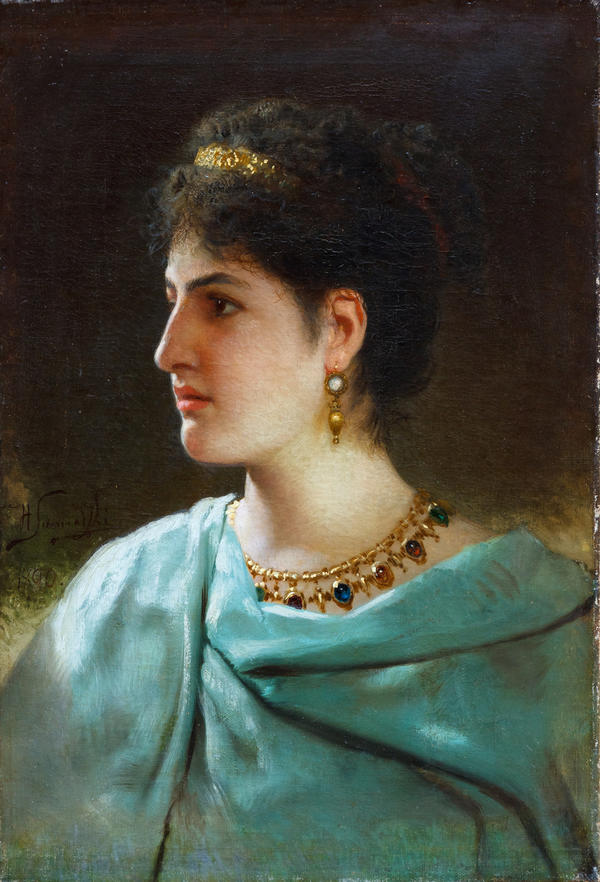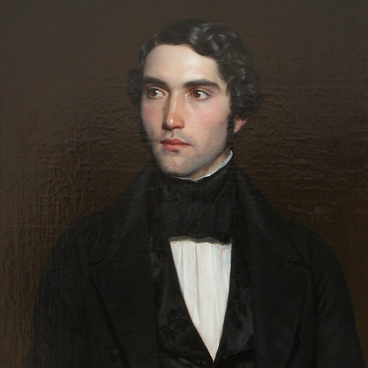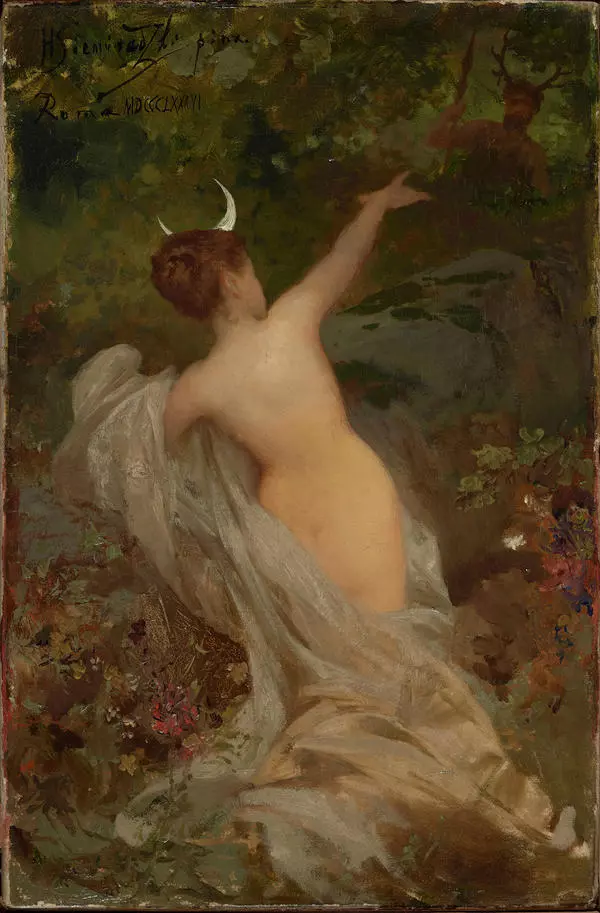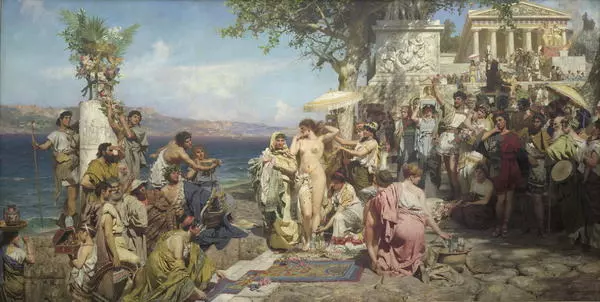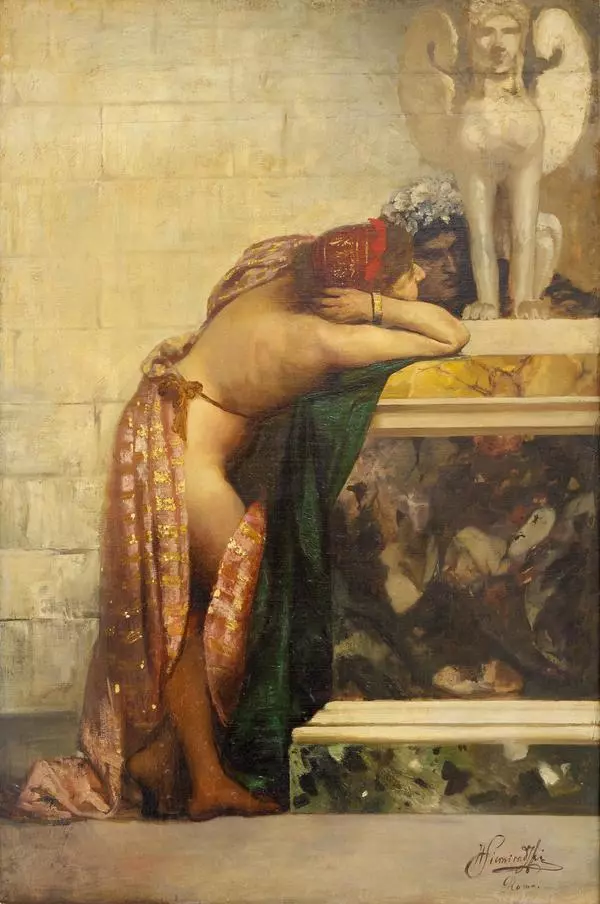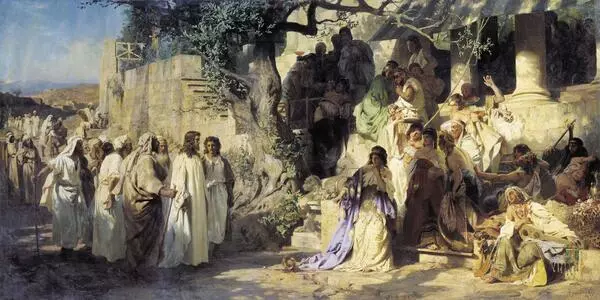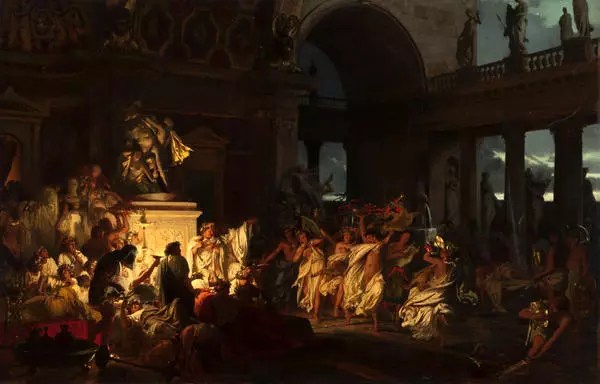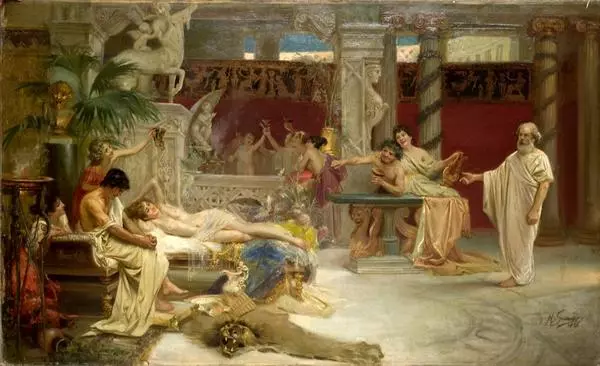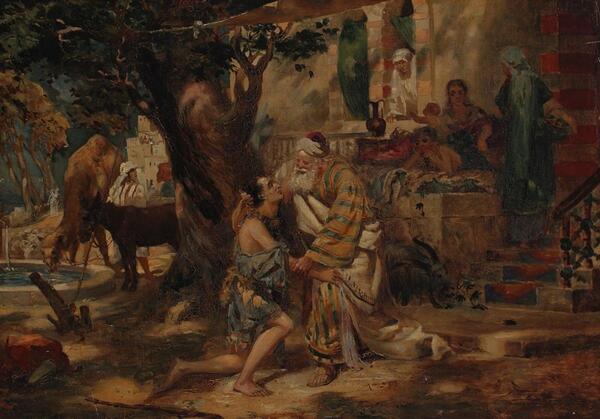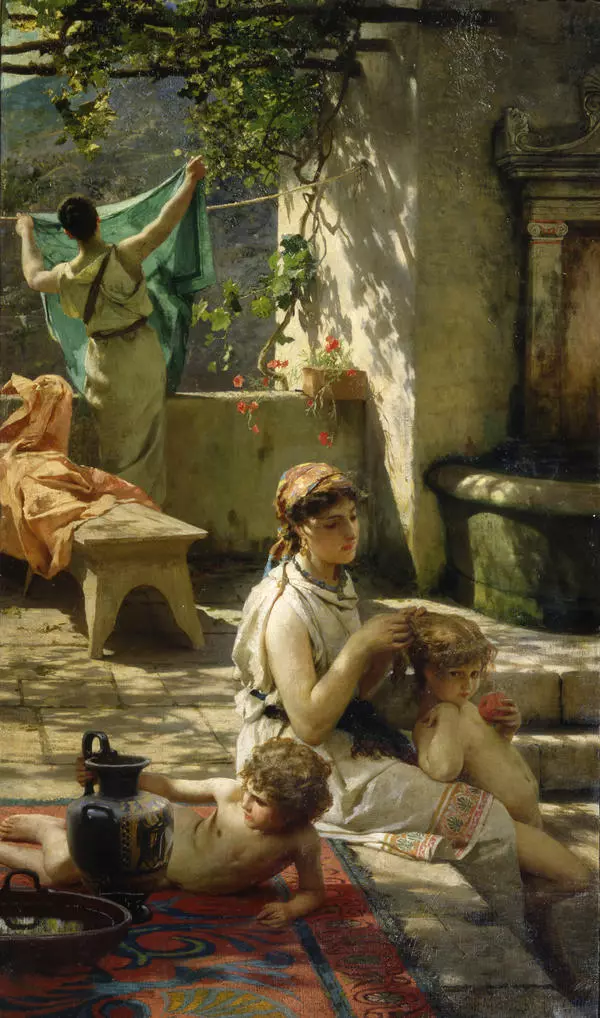You are looking at a painting by Henryk Hypolitovich Siemiradzki (born Henryk Hektor Siemiradzki), entitled Portrait of a Roman Woman, which is not so much a portrait but rather a stylized image of an ancient Roman beauty wearing a tunic and adorned with a tiara and precious stones. It is a type often seen in the artist’s smaller genre paintings based on scenes from life in ancient Rome.
The painter, Henryk Hypolitovich Siemiradzki, was a Russian painter, a distinguished representative of the Russian academic painting, academician and professor at the Imperial Academy of Art, as well as academies of Rome, Turin, Berlin and Stockholm, and a corresponding member of the French Académie des Beaux Arts.
Henryk Hektor Siemiradzki was born in October 1843 into the family of Hypolit Siemiradzki, a Polish dragoon officer, in the village of Novo-Belgorod near Kharkov. He studied both in Kharkov and St. Petersburg, but most of his active artistic life was spent in Rome.
He was most known for his monumental paintings based on scenes from history of ancient Greece and Rome; he was equally successful in the genres of intimate idyll, landscape and portrait. He also did some decorating in theatres and in private interiors.
Most of his artwork is scattered among museums in Poland, Ukraine and Russia, with some to be found in private collections in Europe.
Siemiradzki’s art has always enjoyed popularity: a fashionable and expensive artist, he was awarded large official contracts, although the range of the topics he favoured was rather narrow. He preferred biblical scenes, stories of ancient history and scenes from everyday life set in ancient times, all in the so-called antiquity genre, popular in the late 19th century.
The artist died in 1902 and was buried in Warsaw; in 1903 his remains were reburied in Krakow’s cathedral. Exhibitions of his artwork were held in Poland in 1903, 1939, 1968 and in 1980; and in 2017–2018 the State Russian Museum showed an encyclopaedic exhibition entitled ‘Henryk Siemiradzki and the Russian art colony in Rome’. Unfortunately, quite a few works by the painter have not survived, and his lost art includes frescos from the Moscow Cathedral of Christ the Saviour.

